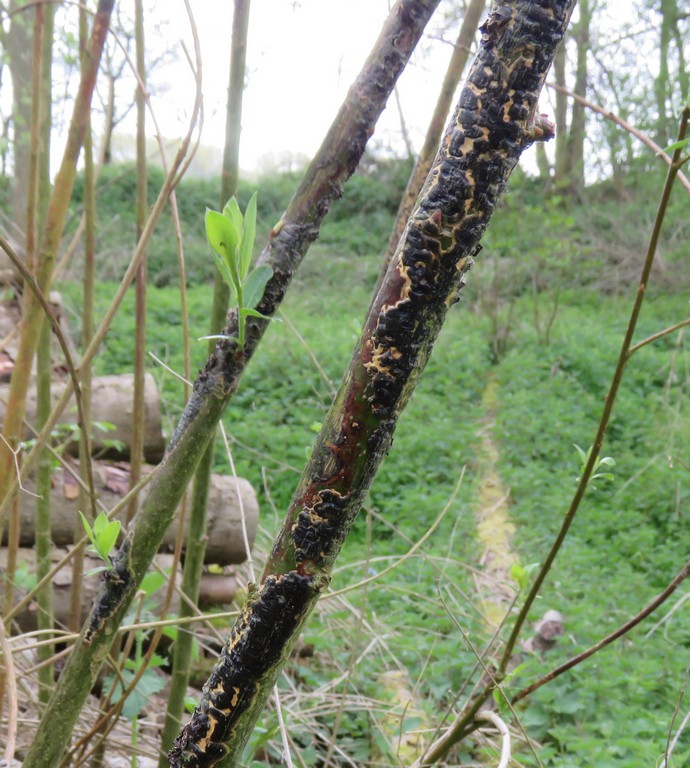Nature Notes – May 2025
Two flies and a fungus
Flies and fungi haven’t often featured in these “notes”. This month two interesting flies to look out for and news of an extremely rare fungus.
St Mark’s Fly
April 25th is St. Mark’s Day. The hawthorn fly traditionally emerges around this date and can be seen well into May. If you are like me, you have probably seen these flies without knowing that they are known as ‘St. Mark’s Fly’. The good news is that they do not sting or bite. They are black in colour, have long legs which dangle below the body and bulging eyes. They can appear in large clouds, often flying at head height so very much in your eye line. Impress your friends by identifying these flies, whilst reassuring them that though they might look as menacing as a horse fly or a mosquito, they are harmless to humans.
Mayflies
Mayflies (ephemerata) are less easy to see in Leicestershire. They do best in fast flowing, clear water. The chalk streams of southern counties are the best places to find large numbers. In flight they are easily recognised as they hold their wings above the body and have a longish, three pointed ‘tail’. Some of the UK’s 51 species do occur locally. They can be seen by any canal or stream on a sunny day, but rarely in large numbers. They hatch underwater and usually spend two years in the water, as nymphs. As the Latin name implies, the adults are ephemeral. Females have an average life expectancy as adults of only a few minutes. They emerge from the water, mate, deposit fertilised eggs back into the water and drop back onto the surface to die. Adult males live on average for only two days.
There are plenty of predators in the water trying to eat the eggs and nymphs. Whilst birds and bats will feed on flying adults. However the most critical time is when the insects are at the surface, struggling to break free from the nymph stage and drying their wings. As fly fishermen know, trout (and other fish) take large numbers of emerging insects at the surface. ‘Dry fly’ fishermen like nothing better than seeing a fish actually choose their artificial fly at the surface.
Willow Blister Fungus

The discovery this spring of Willow Blister Fungus, on two clumps of coppiced willow caused much excitement at Rutland Water’s Egleton reserve. Fungus experts travelled considerable distances to see and photograph the affected saplings. As most visitors to Egleton are birdwatchers, the significance of the find was described in terms of a bird. “This fungus is rarer than a Spoon-billed Sandpiper”. This small Asiatic wading bird has a tiny population and is threatened with extinction.
David Scott




 Kibworth Art Lovers Update & Annual Exhibition
Kibworth Art Lovers Update & Annual Exhibition

